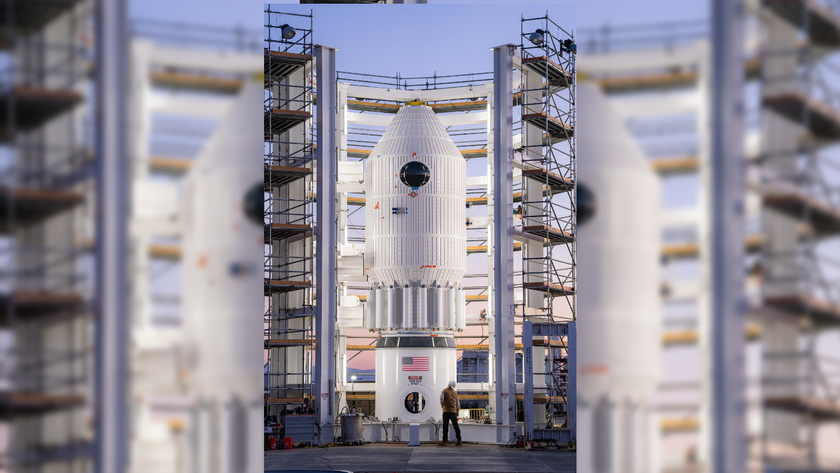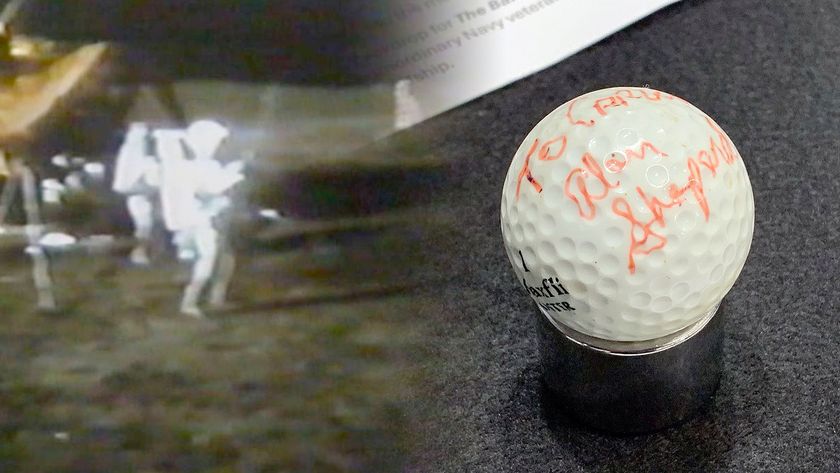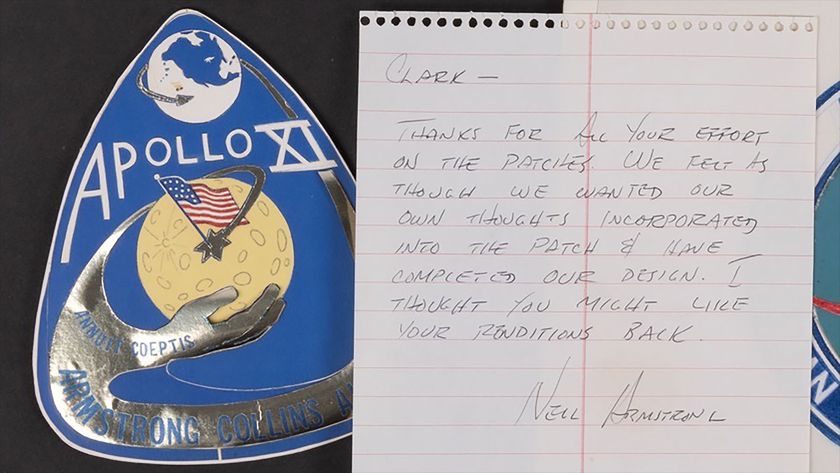Japan Launches Talking 'Robot Astronaut' Kirobo Into Space
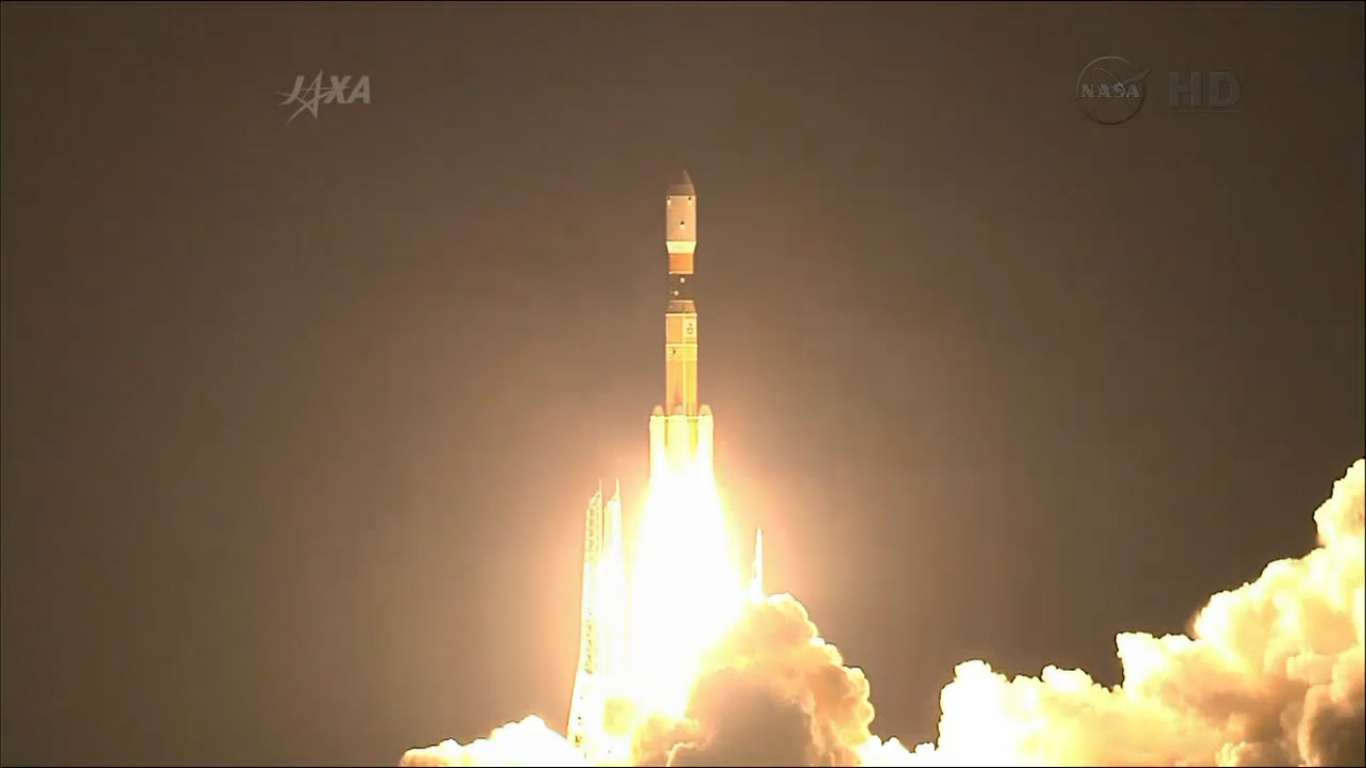
Call it one giant leap for robot kind: A small talking robot launched into space aboard a Japanese cargo ship Saturday (Aug. 3) to keep astronauts company on the International Space Station.
The Japan Aerospace Exploration Agency (JAXA) launched the humanoid Kirobo "robot astronaut" into orbit from the Tanegashima Space Center in southern Japan as part of nearly 3.5 tons of supplies and equipment to resupply the space station's six-person crew.
Kirobo was packed inside Japan's unmanned HTV-4 (Kounotori 4) cargo ship when it launched into orbit atop the country's H-2B rocket at 3:48 p.m. EDT (1948 GMT), though it was early Sunday morning (Aug. 4) Japan Standard Time at the time of liftoff. The HTV-4 spacecraft will arrive at the space station on Aug. 9. [See photos of Japan's nighttime HTV-4 space launch]
"The flight goes very smoothly," a JAXA launch controller said as the HTV-4 spacecraft entered orbit.
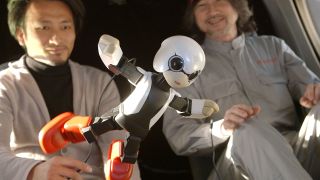
Meet Kirobo, the talking robot
The Kirobo space robot is a diminutive mechanical person just 13 inches (34 centimeters) tall built to converse with astronauts on long space voyages. The robot, and its ground-based counterpart Mirata, are part of the Kibo Robot Project to study human-robot interaction technology. Kirobo speaks Japanese and is expected to talk to JAXA astronaut Koichi Wakata when he arrives at the space station in November.
Kibo, which means "hope" in Japanese, is the name of Japan's research laboratory module aboard the International Space Station. The name of Kirobo is a merging of Kibo and robot, project officials have said.
Get the Space.com Newsletter
Breaking space news, the latest updates on rocket launches, skywatching events and more!
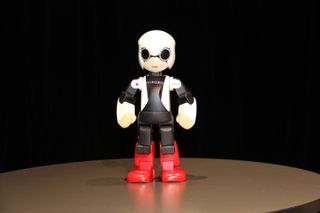
Kirobo and Mirata were built by scientists and engineers at the by the University of Tokyo's Research Center for Advanced Science and Technology. Both robots come equipped with voice-recognition and face-recognition technology, as well as a camera, emotion recognition and natural language processing. The Toyota Motor Corp., Robo Garage and the public relations company Dentsu Inc. are partners in Kibo Robot Project.
"I want to help create a world where humans and robots can live together," Kirobo said when asked what its dream is by an official from Toyota Motor Corp., during the Kibo Robot Project's press unveiling in late June.
You can follow Kirobo's mission online via Twitter using the name @Kibo_robo.
Kirobo is just one piece of cargo among the thousands of pounds riding to the space station aboard Japan's HTV-4 spacecraft. Included among the 3.5 tons of cargo aboard are about 1,880 pounds (852 kilograms) or spare part and new experiment supplies to be attached to the station's exterior. [Japan's HTV Cargo Ships Explained (Infographic)]
"Among the items within Kounotori's pressurized logistics carrier are test samples for research experiments inside the Kibo laboratory, a new freezer capable of preserving materials at temperatures below -90 F, four small CubeSat satellites to be deployed from Kibo’s airlock as well as food, water and other supplies for the station’s crew," NASA officials said in an update. "The pressurized section also is delivering new hardware for the Robotic Refueling Mission to demonstrate robotic satellite-servicing tools, technologies and techniques."
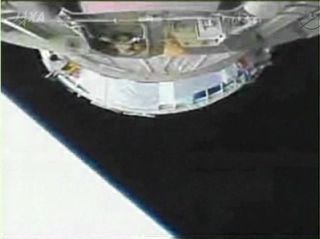
This is the fourth mission for JAXA's HTV program (the name is short for H-2 Transfer Vehicle) since 2009. The cylindrical disposable spacecraft are built to haul up to 6 tons of cargo to the International Space Station and then be discarded at the mission's end.
HTV craft are called Kounotori (Japanese for "White Stork") and are about 33 feet long by 14.4 feet wide (10 by 4.4 meters). They carry supplies and equipment inside a pressurized section, which astronauts can access after the vehicle links up with the station. They also have an unpressurized section that can be accessed via the station's robotic to retrieve spare parts and other larger gear that can be stored on the orbiting lab's exterior.
All JAXA HTV spacecraft are designed to be captured using by astronauts using the space station's robotic arm. After the HTV craft is grappled, it is then attached to an open berthing spot on the orbiting lab. NASA astronauts Karen Nyberg and Chris Cassidy will control the station's robotic arm in order to capture HTV-4 on Aug. 9.
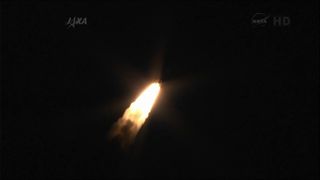
Space station's robot fleet
Japan's HTV spacecraft are just one of several robotic spacecraft that make regular shipments to the International Space Station. Russia's unmanned Progress spacecraft and the Automated Transfer Vehicles built by the European Space Agency also make periodic deliveries.
Two private U.S. spaceflight companies also have billion-dollar contracts with NASA to provide robotic cargo deliver missions to the space station.
The Hawthorne, Calif.-based SpaceX has already launched two of 12 planned delivery flights for NASA using its Dragon space capsules as part of a $1.6 billion deal with the U.S. space agency. Unlike all other robotic cargo ships serving the station, SpaceX's Dragon capsules can also return hardware and experiments to Earth.
NASA also has a $1.9 billion deal with the Dulles, Va.-based Orbital Sciences Corp. for at least eight delivery flights using the company's new Antares rocket and Cygnus spacecraft. The Antares rocket flew its first test flight in April and is slated to launch the maiden Cygnus delivery mission to the space station in mid-September.
The International Space Station is currently home to six astronauts representing three different countries and space agencies. Its Expedition 36 crew consists of three Russian cosmonauts, two American astronauts and an Italian astronaut representing the European Space Agency.
NASA officials said the space station crew watched the HTV-4 launch via a live video link while soaring 260 miles (418 kilometers) over southwest Russia. The Japanese cargo ship will be captured via robotic arm on Friday, Aug. 9, at 7:29 a.m. EDT (1129 GMT) and be attached to the space station at about 9:30 a.m. EDT (1330 GMT).
You can watch the Japanese cargo ship's arrival live on SPACE.com on Friday, courtesy of NASA TV.
Email Tariq Malik at tmalik@space.com or follow him @tariqjmalik and Google+. Follow us @Spacedotcom, Facebook and Google+. Original article on SPACE.com.
Join our Space Forums to keep talking space on the latest missions, night sky and more! And if you have a news tip, correction or comment, let us know at: community@space.com.

Tariq is the Editor-in-Chief of Space.com and joined the team in 2001, first as an intern and staff writer, and later as an editor. He covers human spaceflight, exploration and space science, as well as skywatching and entertainment. He became Space.com's Managing Editor in 2009 and Editor-in-Chief in 2019. Before joining Space.com, Tariq was a staff reporter for The Los Angeles Times covering education and city beats in La Habra, Fullerton and Huntington Beach. In October 2022, Tariq received the Harry Kolcum Award for excellence in space reporting from the National Space Club Florida Committee. He is also an Eagle Scout (yes, he has the Space Exploration merit badge) and went to Space Camp four times as a kid and a fifth time as an adult. He has journalism degrees from the University of Southern California and New York University. You can find Tariq at Space.com and as the co-host to the This Week In Space podcast with space historian Rod Pyle on the TWiT network. To see his latest project, you can follow Tariq on Twitter @tariqjmalik.
